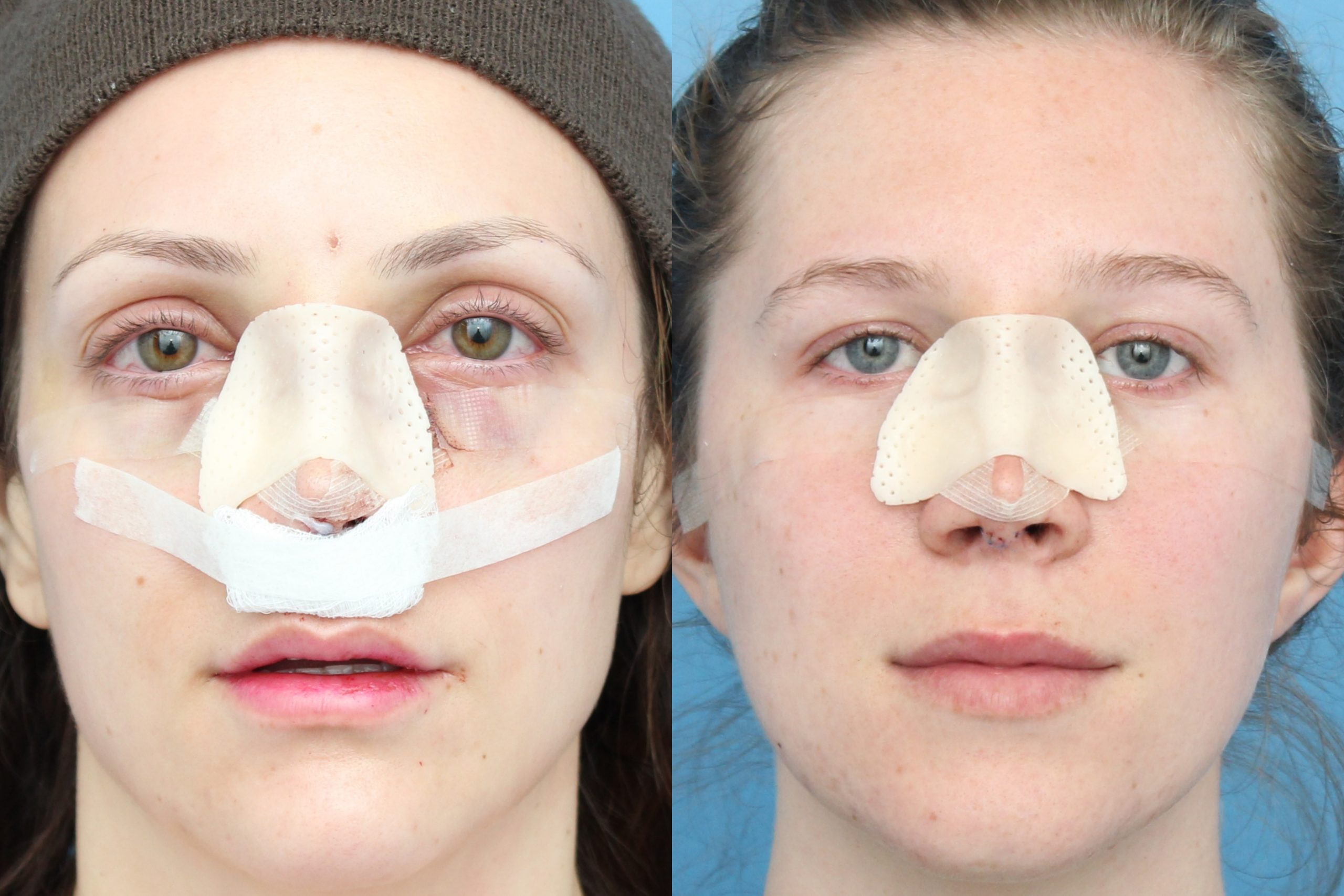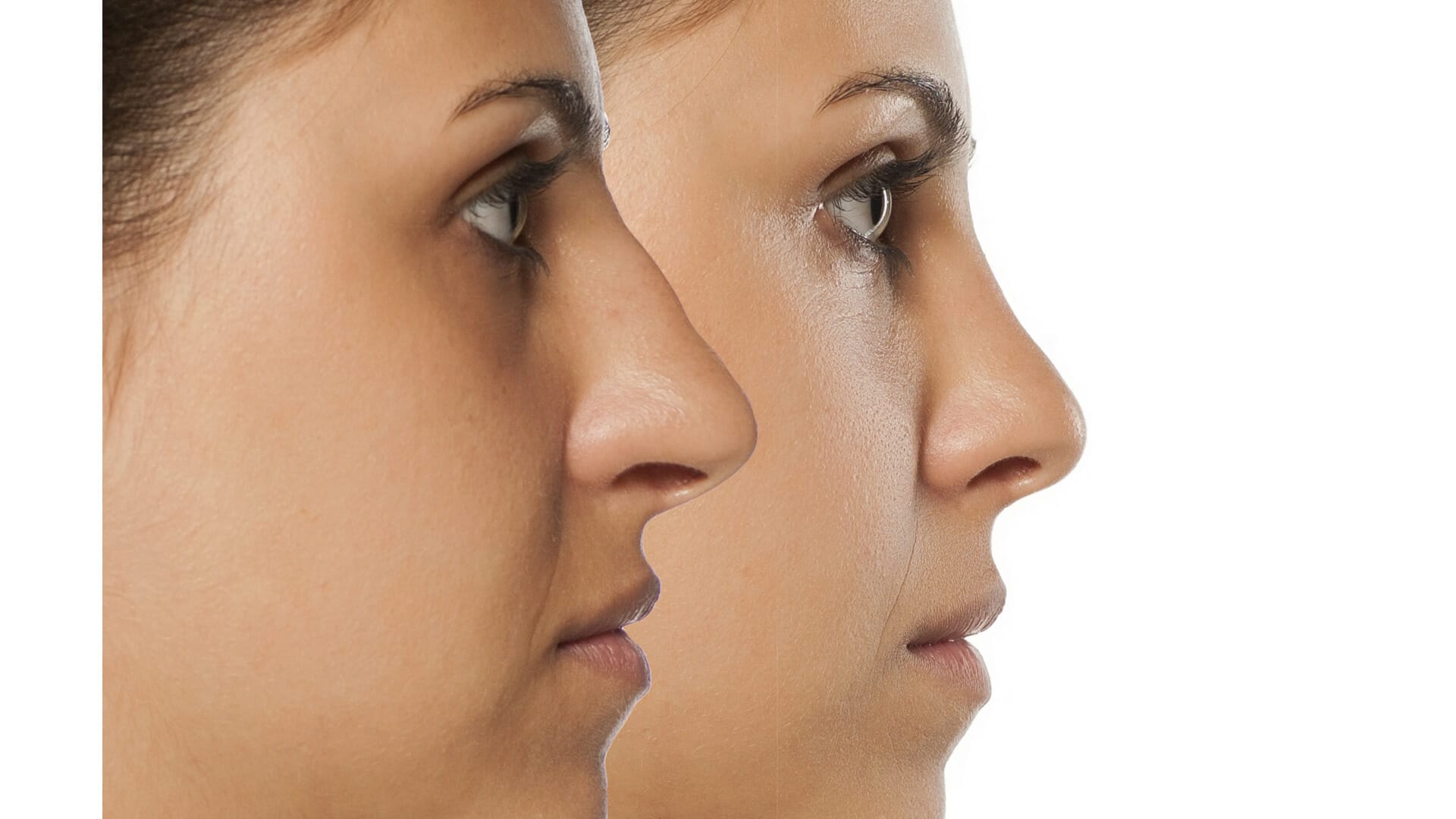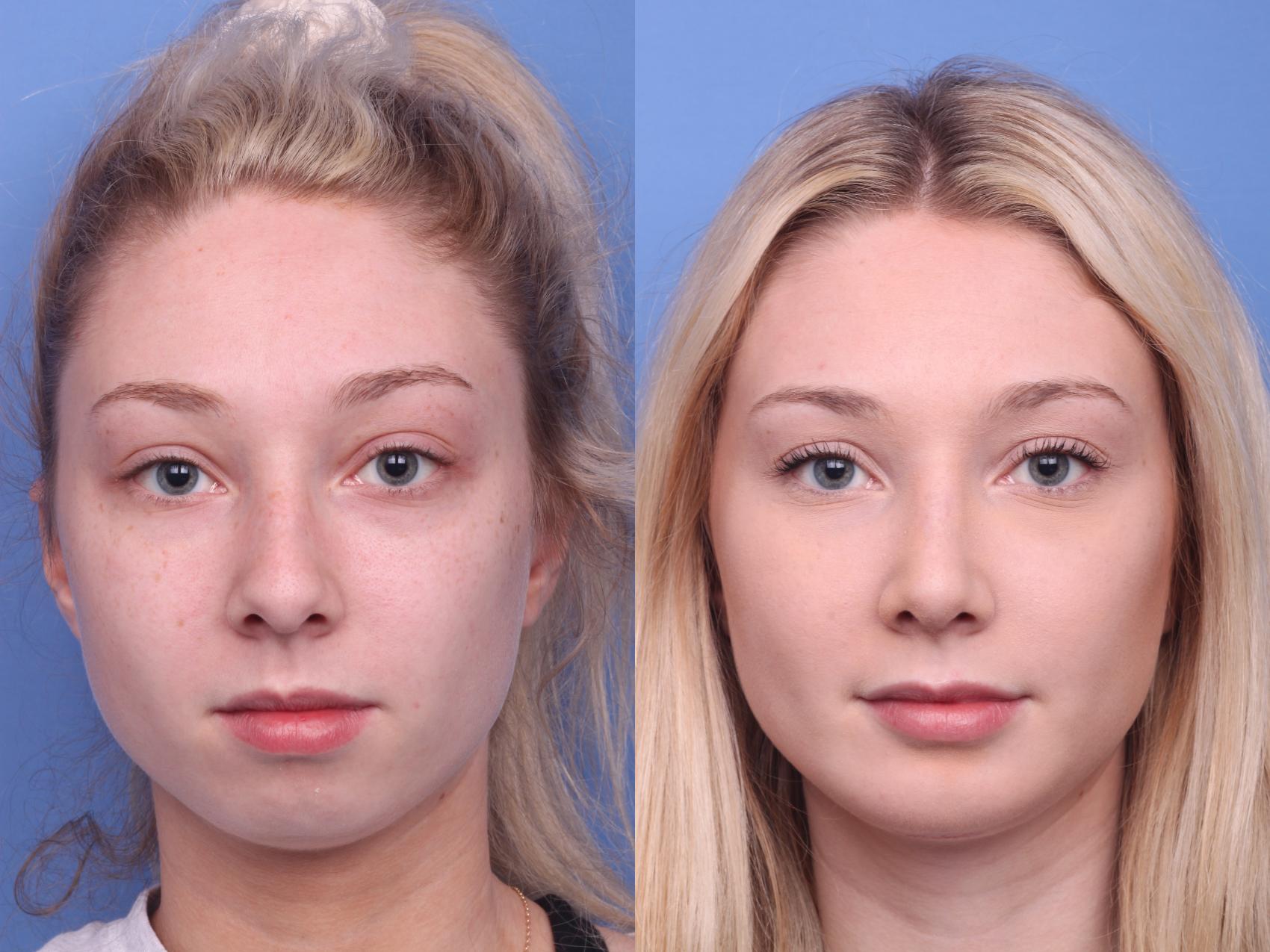Rhinoplasty: Understanding Swelling After Nose Surgery
Rhinoplasty, or nose surgery, is a popular method for reshaping the nose. Through this procedure, surgeons can reduce nasal humps, correct asymmetry, refine the nasal tip, and even eliminate breathing problems. Regardless of your reason for undergoing rhinoplasty, you will face similar side effects and consequences post-surgery—one of the most common being rhinoplasty swelling. To minimize these complications, it is crucial to carefully follow your surgeon’s post-operative instructions and choose an experienced specialist.
One of the most common long-term side effects after rhinoplasty is nasal swelling, which varies for each patient depending on the type of surgery. If you’re concerned about swelling after your rhinoplasty, read the guide below.

Why Does Swelling Occur After Rhinoplasty?
Swelling is a natural response to the trauma inflicted on the nasal tissues during rhinoplasty. The surgeon must manipulate these tissues to reshape the nose. Swelling appears in two forms: primary and secondary.
Primary swelling results from direct trauma to the nasal tissues, while secondary swelling occurs due to fluid accumulation around the nose. Unfortunately, this swelling can persist for several months. However, it’s important to remember that swelling after rhinoplasty is normal and expected.
Some fortunate individuals see their swelling subside within a few weeks, while others may deal with it for several months. The duration and severity of swelling depend on the surgical technique, your nasal structure, and your surgeon’s expertise. If your swelling is accompanied by other symptoms, be sure to notify your specialist.
Timeline of Nasal Swelling After Rhinoplasty
You’ll need patience to see the final shape of your nose after rhinoplasty. Recovery takes time and varies by individual. In some people, swelling fades quickly and the healing process completes smoothly.
The tip, bridge, and surrounding facial areas are the most common parts to swell. Note that swelling may appear worse before it gets better. So, if your nose seems more swollen a few days post-op, don’t panic — it’s part of the healing process.
To understand this better, here’s a summary of the swelling timeline after rhinoplasty:
Week 1 Post-Op
Expect significant swelling in the first few days after surgery. You may also experience nasal sensitivity, pain, and even breathing difficulties. These symptoms typically improve as the swelling subsides.
To reduce swelling, elevate your head by stacking pillows and sleeping in a semi-upright position. This promotes blood circulation and reduces inflammation.
Simply put, keeping your head above chest level helps minimize swelling and bleeding. During the first week, your nose may appear puffy, and you might also notice bruising around the eyes, cheeks, and lips.

Week 2 Post-Op
By the second week, swelling usually decreases significantly. Though you may not notice daily changes in the mirror, there will be visible improvement. Some people feel confident enough to return to public activities.
You can also use concealer to hide bruising or puffiness. If you feel physically ready, returning to work after two weeks is often possible.
Weeks 3–4 Post-Op
Although some residual swelling might remain, by week four, it will have noticeably diminished. Most visible signs like bruising and puffiness fade during this period.
This stage is often exciting, as the new shape of your nose gradually becomes visible. Keep in mind, those with thicker skin may experience longer-lasting swelling.
2–3 Months Post-Op
By this stage, most swelling should resolve, and the shape of your surgically enhanced nose becomes clearer. The nasal structure regains stability, and your surgeon may approve resuming activities like weightlifting and aerobic exercise.
4–6 Months Post-Op
At this point, swelling should be minimal, allowing you to better appreciate the final look of your nose. Numbness or tingling sensations also begin to fade. Surgeons report that about 90% of swelling disappears by month six, with the remaining 10% mostly concentrated in the nasal tip.
12–18 Months Post-Op
The final shape of your nose becomes fully defined after a year. Although you might still feel subtle swelling at 12 months, it typically resolves entirely by 18 months. Reshaped cartilage also fully settles within this time. In the end, the bridge and tip of your nose will be significantly refined.

How to Reduce Nasal Swelling After Rhinoplasty
While the rate of healing varies from person to person, there are still ways to manage swelling effectively. Following your surgeon’s advice can speed up the recovery process. Here are some tips:
-
Avoid strenuous exercise without your surgeon’s approval
-
Do not take blood-thinning medications
-
Keep your head elevated
-
Go on light walks to prevent blood clots
-
Follow a nutrient-rich, healthy diet
-
Sleep on your back
-
Avoid blowing your nose
-
Get adequate rest
-
Stay hydrated
-
Consult your surgeon before using any cleanser, moisturizer, or cream
-
Use cold compresses
-
Apply sunscreen carefully
-
Avoid smoking
-
Follow your surgeon’s taping instructions
-
Visit your surgeon for nasal massage if necessary
-
Consider Roaccutane (under supervision)
-
Corticosteroid injections may help reduce swelling in thick-skinned noses
Factors That Affect Swelling Reduction After Surgery
Several factors can influence how quickly your swelling subsides:
-
Type and extent of nasal surgery
-
Amount of manipulation to the skin, bone, and cartilage
-
Surgical technique used
-
Your body’s natural healing ability
-
Type of rhinoplasty (e.g., revision, natural, fantasy-style, semi-fantasy, or bone-based)
-
Original nasal tissue type
-
Skin thickness
-
Amount of rest and post-op care
Is Swelling After Rhinoplasty Normal?
As mentioned earlier, swelling is completely normal after rhinoplasty. However, in rare cases, it may signal a complication. Seek medical attention if you notice any of the following:
-
Excessive swelling
-
No signs of improvement over time
-
Pain or fever due to severe swelling
-
Nasal discharge from the surgical area
-
Breathing difficulty caused by swelling

Why Does Swelling Increase Around Day 3?
For most people, the nose still resembles the surgical outcome in the first few days — swelling hasn’t peaked yet. Swelling often worsens before it improves as part of the body’s healing response.
By day three, swelling typically peaks, and you might feel the most discomfort. Your doctor may prescribe pain relievers to help you cope.
The Role of Diet in Reducing Nasal Swelling
Diet plays an important role in managing post-surgical swelling. Some foods can worsen swelling and delay recovery — salty foods are especially harmful.
Avoid foods high in sodium, as it contributes to fluid retention and swelling. For a smoother recovery, reduce or eliminate sodium from your meals.
Also, avoid hard-to-chew foods like nuts, seeds, and crunchy snacks, as the chewing motion can stress your healing nose and facial muscles. These snacks are often salty as well, further prolonging swelling.
Conclusion
If you’re planning to change the shape of your nose and are prepared for the journey ahead, consult a qualified specialist to discuss your concerns and understand the potential side effects. The surgeon will evaluate your nose and provide detailed post-operative care instructions.
One of the leading ENT and head & neck surgeons in this field is Dr. Rahmati. During your consultation, he will assess your nasal structure and offer professional advice on post-surgery care. With extensive experience in aesthetic rhinoplasty, Dr. Rahmati can guide you every step of the way.



